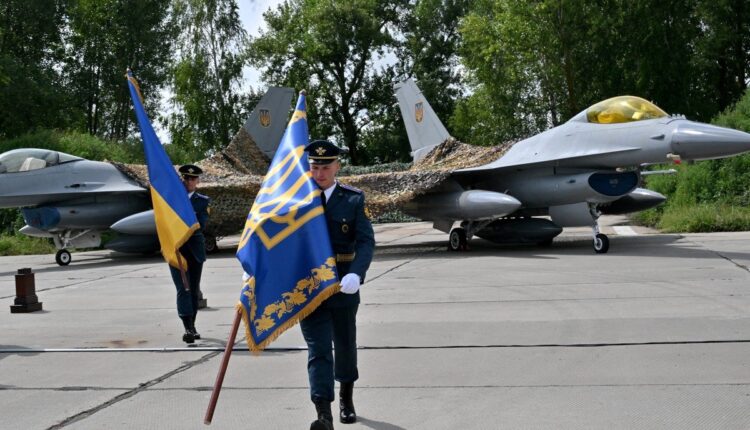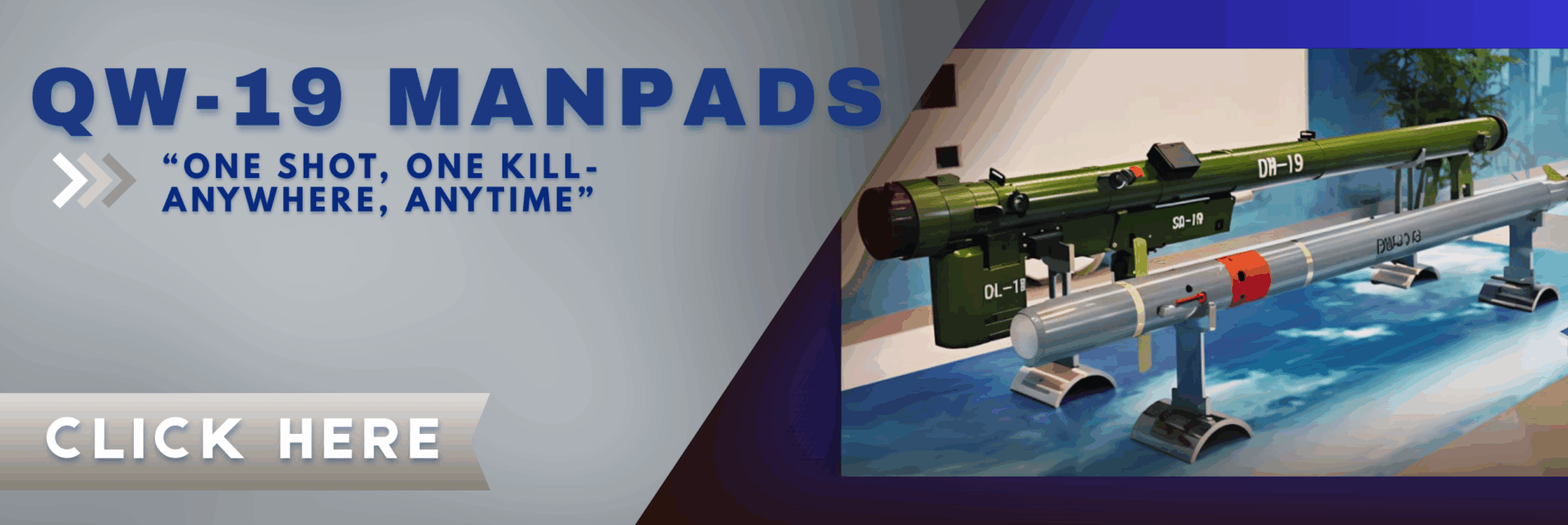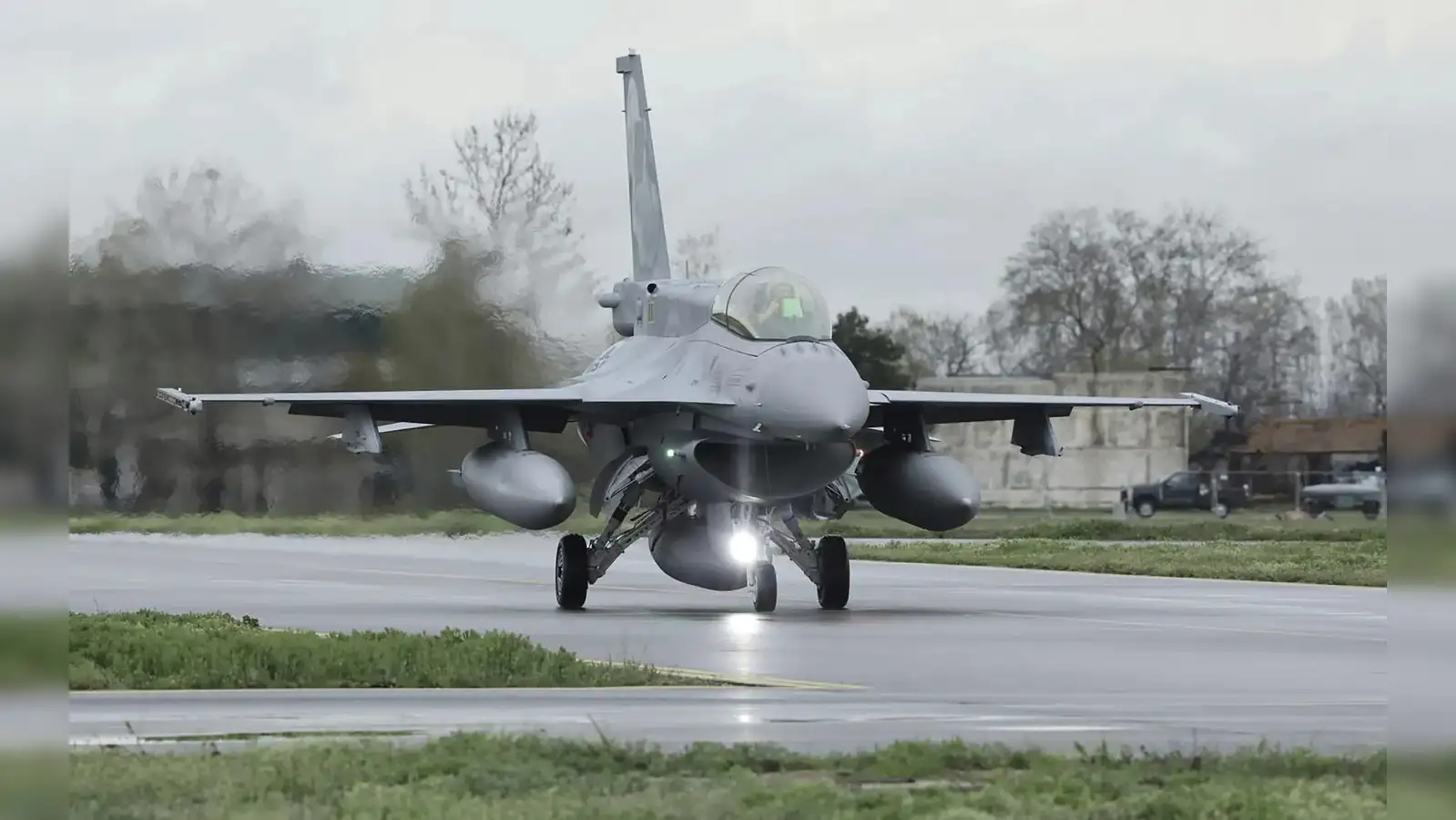Ukraine Risks Becoming the Final Graveyard for F-16s as Patriot Missile Crisis Guts Kyiv’s Air Defences
Depleting US Patriot missile stocks could force Ukraine’s newly arrived F-16 fleet into a deadly trap — repeating the fate of Abrams tanks turned wrecks on the battlefield.


Ukraine’s battle-scarred plains may soon carry a new, grim title: the final graveyard not just for Western-supplied Abrams and Leopard tanks, but for America’s prized F-16 Fighting Falcons.
What once promised to tilt the balance of air power in Ukraine’s favour now stands at risk of becoming another cautionary tale in a conflict defined by ruthless attrition and a rapidly vanishing shield of air defence missiles.
According to the influential FighterBomber Telegram channel, Ukraine’s dwindling stocks of ground-based air defence interceptors — especially the high-demand US-made Patriot missiles — have plunged to a critical low, stripping Kyiv of its strongest deterrent against Russian Aerospace Forces (RuAF) air dominance.
Where once RuAF fighter jets hesitated at standoff distances, Ukraine’s radar coverage and layered missile batteries have thinned so alarmingly that Russian pilots are now routinely pressing closer to the line of contact, conducting relentless DEAD (Destruction of Enemy Air Defences) operations.
The result is that Ukrainian air defence units, already stretched thin, are being systematically hunted by precision strikes — an unnerving development that risks shredding the last line of protection for Kyiv’s newly fielded F-16s.
Western military experts warn this chain of events is no accident but the direct fallout of a wider strategic problem now spiralling out of Washington’s control.
A blockbuster revelation in The Guardian on July 8 exposed just how dire the situation has become: the Pentagon now retains only 25 percent of the Patriot missile interceptors needed to fulfil its full military obligations worldwide.

“After burning through stockpiles in the Middle East in recent months, an alarming depletion led to the Trump administration freezing the latest transfer of munitions to Ukraine,” the newspaper reported.
This admission triggered alarm bells from Brussels to Kyiv because, without a steady pipeline of Patriot interceptors, Ukraine’s airspace — already contested — could soon be fully penetrated by Russia’s better-equipped air force.
In a telling episode, US forces reportedly fired nearly 30 Patriots in a single night to intercept Iran’s retaliatory ballistic missiles after the Pentagon’s audacious bombing of Iran’s nuclear facilities last month.
Yet with American manufacturers able to produce barely 600 Patriot interceptors per year, and adversaries like Iran still fielding more than 1,000 ballistic missiles even after a bruising 12-day war with Israel, the Pentagon is forced to ration its stocks for multiple fronts.
That leaves Ukraine near the bottom of the priority ladder, a bitter reality underscored by reports that US Defence Secretary Pete Hegseth has quietly signed off on freezing further Patriot shipments to Kyiv.
In practical terms, Ukraine now faces a scenario where its pilots — many trained in record time — must fly 4th-generation F-16s in roles they were never intended to shoulder alone: intercepting drones, cruise missiles, and Russian fighters simultaneously, often within lethal range of advanced Russian long-range air-to-air missiles.
The FighterBomber channel’s stark assessment paints a chilling picture: “With Patriots running out, RuAF fighters no longer fear pushing deep into contested airspace to destroy Ukraine’s defences at the source.”
It’s a development that gives Moscow a freer hand to exploit weaknesses, coordinate aerial raids, and strike at the precious few F-16s that NATO partners have managed to deliver.
Despite high-profile pledges from Denmark, the Netherlands, Norway, and Belgium to transfer up to 70 airframes, Ukraine’s operational fleet remains painfully small.
As of mid-2025, reliable open-source estimates indicate Ukraine has no more than 16 to 18 F-16s in active service, with at least four confirmed combat losses since the first squadron became operational in late 2024.
These losses are a stark reminder that airframes alone do not equal air supremacy — especially when the supporting network of advanced radars, interceptors, and trained maintenance crews are overstretched or missing altogether.
Without an urgent resupply of Patriots, the painful irony is that these F-16s — once touted as the ultimate answer to Russia’s numerical advantage — risk being shot down in the same unforgiving skies that have already claimed so many Western-supplied tanks.
Images of abandoned, charred Abrams and Leopard MBTs littering Ukraine’s steppes have become the ultimate symbol of NATO’s limitations in sustaining advanced weapons systems once they cross into the cauldron of frontline warfare.
In USD terms, every F-16 lost carries a replacement value that can range between USD 30–40 million (equivalent to RM141 million–RM188 million) per airframe, not counting the even higher price of pilot training, spares, and support infrastructure — a staggering bill for a country already fighting to survive economically.
For the Pentagon, this crisis has become a delicate balancing act: protect critical stocks of interceptors for US bases in the Gulf, deter Iran and other adversaries, and somehow continue to backstop Ukraine’s fragile air shield at a time when Russia’s fighter squadrons are ramping up their sorties and DEAD missions.
The stakes could not be higher.
Kyiv’s commanders know that every Patriot missile held back in the US means another Russian sortie that flies unchallenged, another anti-radar strike that wipes out decades-old Ukrainian S-300 batteries, and another day when brave F-16 pilots have to fly with the odds stacked heavily against them.
The question that haunts every NATO war planner today is brutally simple: can these F-16s survive long enough to make any real impact, or will they end up as just another set of burnt-out husks beside the wrecks of Western tanks?
In this unforgiving geometry of modern war, air power without air defence is a recipe for a graveyard — a bitter truth that Ukraine’s pilots, engineers, and political leaders now confront daily.
Unless Washington can find a way to fast-track new interceptor production and unlock Patriot deliveries, Ukraine’s skies will remain a killing ground where even the best of NATO’s fighters could be hunted, outnumbered, and shot down by a foe that has learned how to exploit every hole in Kyiv’s fragile shield.
For now, the graveyard of Western tanks may soon be joined by a graveyard of F-16s — a chilling reminder that in a war of attrition, it is not the promise of advanced jets that turns the tide, but the simple, brutal arithmetic of how long you can keep them flying.
SNIPPET
Western analysts warn Ukraine’s F-16s could become easy prey as Patriot missile stocks plunge to crisis levels, opening Kyiv’s skies to Russia’s advanced fighters.

